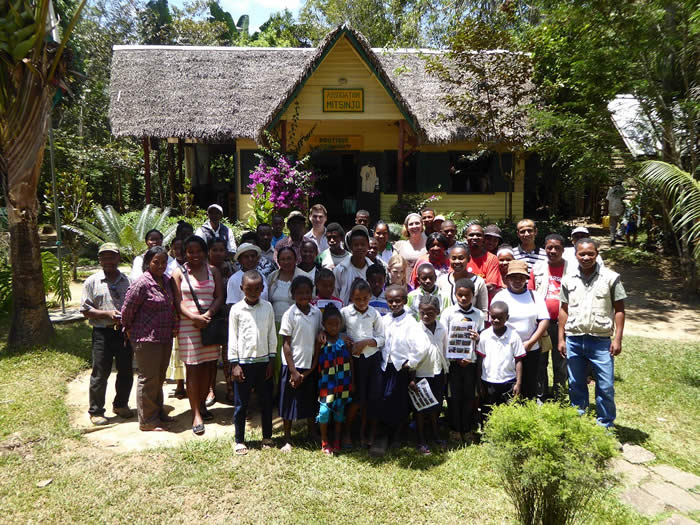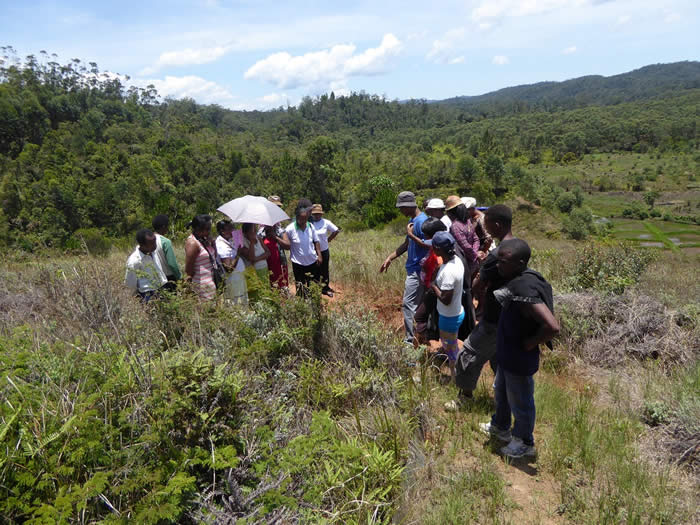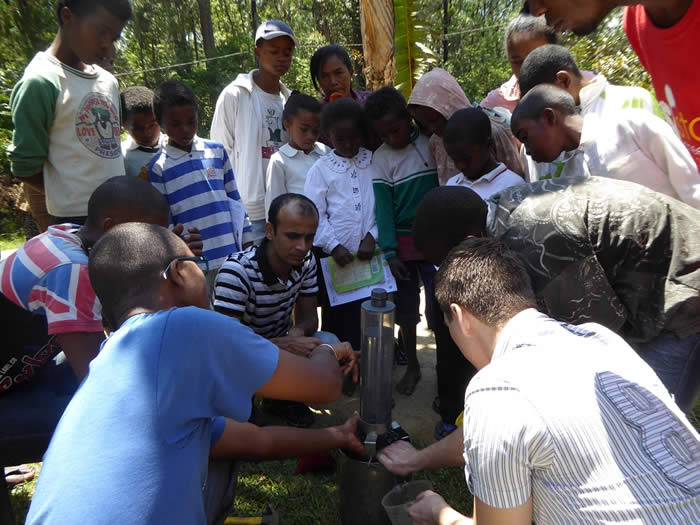
p4ges – Les Paiements pour les Services écosystémiques Globaux peuvent-ils réduire la pauvreté
P4ges hosts an open day for representatives of the community in Andasibe commune

 |
 |
 |
 |
Non disponible en français pour le moment.
For just over a year the p4ges hydrology team has been carrying out very intensive research at three heavily instrumented plots in the commune of Andasibe to investigate the impact of land use change on hydrological services. This work is coming to an end and the experiment will be dismantled soon. This week p4ges invited representatives of the local community including the mayor, school teachers, representatives of the church and women’s groups (as well as selected children from 8 schools) to visit the plots, see demonstrations of our equipment in action and discuss the preliminary results. This event was a follow up to a similar national stakeholder event held in September and one for regional stakeholders in March.
The event was a real success. Over 50 people attended (more than we had planned for or invited as interest was so high). Following a welcome from Jean-Noel Ndriamiary, the president of Association Mitsinjo (our hosts for the day and close collaborators with this work) we started with an introduction to the concept of ecosystem services from Julia Jones and an overview of p4ges work on the links between land use and ecosystem services from Rina Mandimbinaina. Then Jaona Lahitiana presented the hydrological work with input from some of the local assistants who have been so vital to the success of this research. There were many enthusiastic questions and much discussion at this point which had to be cut short to ensure we had time to get to the field.
Over the coffee break the hydrology team Chandra Ghimire, Jaona Lahitiana and Bob Zwartendijk demonstrated their equipment for measuring infiltration before we piled into vehicles for the short drive to the access point to the degraded land site. We were certainly cosy on the drive: there were 22 of us in the Mitsinjo car (though most of them were children so that was OK).
At the degraded land site the team explained the research design, the equipment, what we measure and what it all means. “It is fantastic to have the chance to see with our own eyes this research and the equipment and approach they use. We have not had this chance before with other research in the area. This makes it very clear that what happens to the forest and management of land does affect water. The explanation has been very clear” Ramahazo Paul (Adjoint Mayor, commune Andasibe).
The local assistants played a really vital role in explaining the research to our guests. They emphasised how they could easily see a difference between the amount of water they have to measure in the drums in the run off plots between the degraded land, the reforestation plot and the forest plot and explained articulately the reasons for this and why this matters to local stream flow, flood risk, sedimentation and therefore agriculture.
“Not meaning to be rude but to be honest people don’t believe researchers and vazaha [foreigners]. What is good is that it is people from here who have explained to us what they have seen every day in terms of differences in the amount of water entering the drums in the different sites. This makes everything very clear. This is very convincing. This needs to be shared more widely.” Bruno Rakotomalala (school teacher from Ampangalatsary).
We had so many excellent questions–some quite technical focusing on the research, but many taking a wider perspective. There was a real focus on what people locally could do and there was deep and detailed discussion on this topic between the guests as they walked around the site.
After a really successful visit we returned to Mitsinjo for a lovely lunch. Thanks so much to Mitsinjo for hosting this day (and being such excellent collaborators on the research) and to everyone from p4ges and our local assistants and guests who made it such a success.
Watch video here
Date: 14 December 2015
Julia Jones

